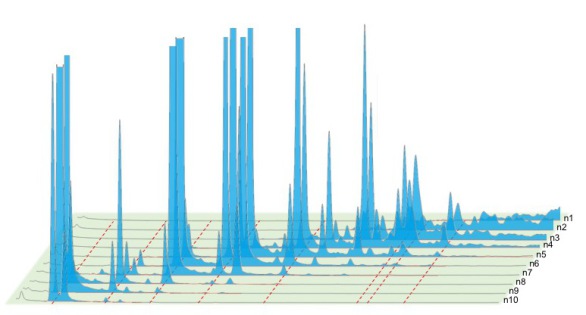
Preparative Platform
Isolating and fractionating HMOs from pooled donor human milk to assess in vitro and in vivo efficacy and determine structure-function relationships in preclinical models.
Human milk contains more than 150 structurally distinct HMOs, and they may all have different effects.
To assess HMO efficacy and determine structure-function relationships, we isolate HMOs from pooled donor human milk to capture all known HMOs in one prep. First, we test the efficacy of these pooled HMOs in suitable in vitro and/or in vivo models. Then, if we observe an effect, we fractionate HMOs by multidimensional chromatography to determine structure-function relationships.
HMO preps are often contaminated with excess lactose, salt and endotoxins, which leads to misinterpretation of what true HMO effects are. Thus, our preparative platform is designed to remove contaminants and applies rigourous quality control to obtain HMO preps of the highest quality.
HMOs available for discoveries
Contact us to assess HMO efficacy and structure-function relationships within your area of expertise. We are always interested in exciting new collaborations that help us understand the full potential of HMOs.
Success stories
We successfully applied this approach of HMO efficacy testing and stepwise structure-function elucidation in tissue culture as well as in animal models. For example:
- LNT inhibits growth of Group B Streptococcus (GBS) in culture (PubMed)
- DSLNT reduces necrotizing enterocolitis in neonatal rat model (PubMed)
In both cases, we elucidated the chemical space around the effective HMOs and confirmed that the results have implications to health and diseases in humans.
How it works
We isolate HMOs from pooled donor human milk with 99% purity.
We start with pooled donor human milk to capture the entire spectrum of oligosaccharides, which can vary between women. Our HMO preps contain less than 1% lactose, which is a prerequisite to assure that the observed effects can be attributed to HMOs and are not simply due to lactose, which is long known to serve as prebiotic and interfere with immune cell biology. Our HMO preps contain neutral (non-sialylated) as well as acidic (sialylated) HMOs that can be both focusylated and non-fucosylated.
We fractionate HMOs to identify the most effective one.
We use multidimensional chromatography technology to enable studies that establish structure-function relationships. We use anion-exchange chromatography to separate HMOs by charge, size-exclusion chromatography to separate HMOs by size, and affinity chromatography to separate HMOs by structural epitope.
We then re-test the different fractions and subfractions in preclinical models and identify the most effective HMO structure(s).





